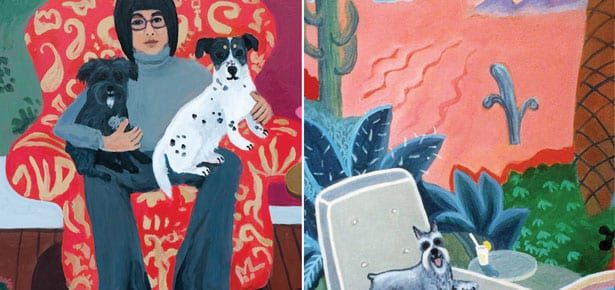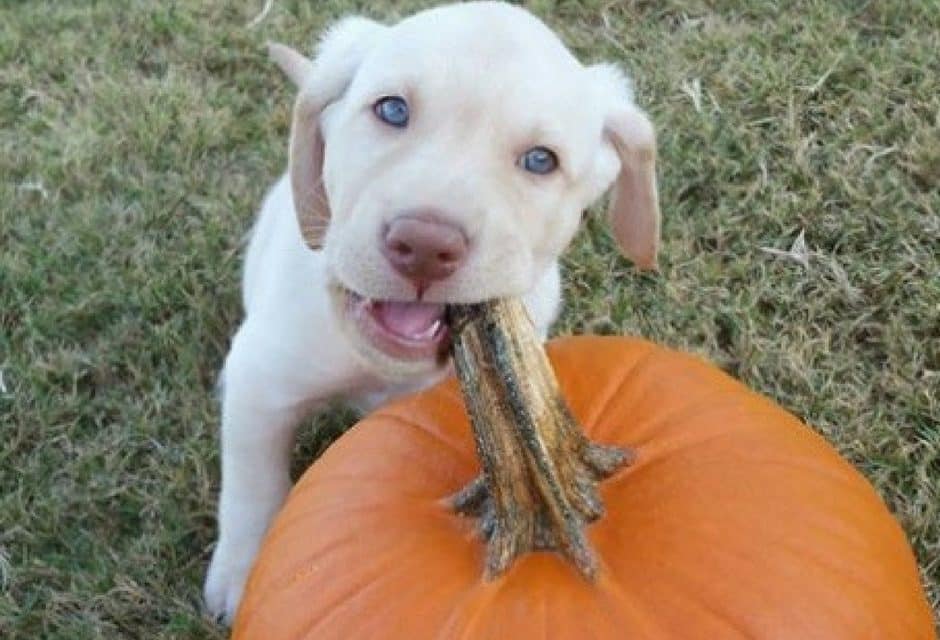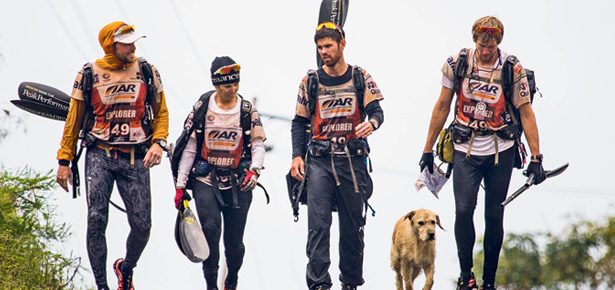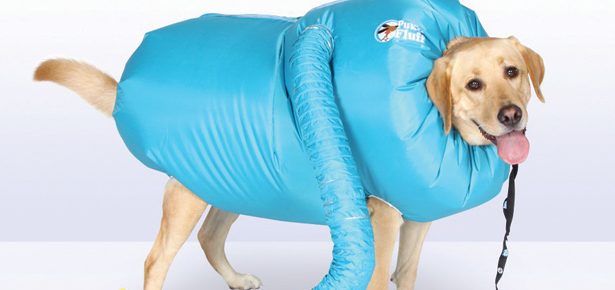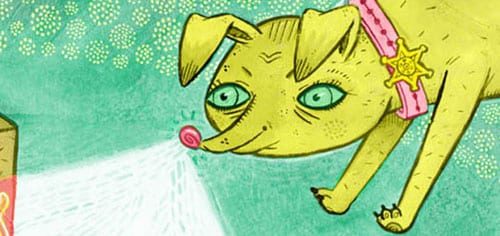
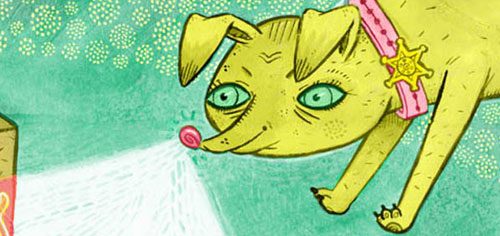
Dog the Odour Hunter
An unprepared MD staffer and her sight-challenged Pug take on canine nose-work.
I was a terrible student in high school, especially when it came to the much-abhorred subject of math. I consistently showed up for class without a calculator, notebook, textbook, or pen. My math teacher hated me (She signed my yearbook “Glad you’re not in my class anymore.” Seriously.) Despite my lack of preparedness and general indolence, I managed to pass math and graduate high school a competent and relatively math-abled adult. Since I beat the odds and triumphantly completed said course without the necessary tools or due diligence, I reasoned that I could train my blind, one-eyed, nine-year-old Pug, Roxy, in the sport of K9 Nose Work with the same lazy approach.
Before you judge this seemingly irrational conclusion, consider my logic: Roxy has relied on nothing but her nose, ears, and my motherly intuition to make her way in life since she was four months old, using her snout to guide her through a dark and often treacherous world full of chair legs and rock-hard shins. Tracking aromatic goodies within a safe environment would be pup’s play for this odour-detecting expert. Armed with a surplus of confidence, both in my ability to lead and in Roxy’s desire to learn, my visually impaired partner and I registered for an “intro to nose work” class.
Knowing full well that I would widely publicize our imminent success to an uninformed audience of family and friends, I thought it prudent to school myself in all things nose work. The sport of canine scent detection (or nose work) was created in 2007 in southern California by trainers of professional working detection dogs. According to the National Association of Canine Scent Work (nacsw.net), an odour recognition test (ORT), the competitive trial that serious scent detectives work toward, requires that a dog use its nose to locate a target odour (an essential oil dabbed on a cotton swab) and then signal to their partner using body language that they’ve detected the scent. Dogs in Level One search for birch, then progress to birch and anise in Level Two, and finally birch, anise, and clove in Level Three.
Before a dog/human team reaches this level of scent-discovering expertise, they are introduced to the concept of nose work by “hunting” high-value treats such as hot dogs, steak, or cheese that have been hidden in one of several cardboard boxes strewn throughout a sterile, indoor environment. The idea is to get the dog using her nose to “hunt” for the target odour, in this case meaty delights, without relying on physical cues from her human partner to make the discovery. This basic platform is where Roxy and I would start out.
As we approached the expansive property where the first class was to take place, my coloured history as a terrible student reared its ugly head, and I was transported back ten years to math class. The instructions provided by Ann, our patient and skilled “nose work” teacher, clearly stated the requirements: bring a harness, a seven-foot lead, and meaty treats, and arrive at least 15 minutes early to set up. We arrived 20 minutes late, toting a collar, a four-foot lead, and no treats. Luckily for me, the attendants were friendly and accommodating, gladly offering up their high-value goodies to my anxious partner.
Since we were the last to arrive, Roxy would be the last in turn to run a trial. This proved to be advantageous, as it gave me the chance to observe the other dogs and take furious notes before displaying our skills to our classmates.
Once the first dog, Bodecelli, a Lagotto Romagnolo, entered the ring, it was made clear that all human by-standers were to ignore his curious advances; his only reward would be the cheese in the target box. Ann began his first run by showing him the target box and rewarding his curiosity with a treat. The box was then refilled with goodies and laid on the floor among a half dozen other cardboard boxes of varying shapes and sizes. And he was off, excitedly exploring the cement floor with his face and periodically looking to his handler for direction. Although it was difficult, his partner stoically avoided his gaze since the dog will eventually learn to signal that a scent has been found with such a look. After diligently examining each box and suspiciously eyeing his yummy prize, Bodecelli finally went in for the kill and consumed his reward. Restrained praise and pats immediately followed.
As each pair took their turn, it was clear that the dogs’ comfort levels within the environment varied; some began by suspiciously walking the perimeter while others dove right into the boxes. This instantly made me feel at ease, because Roxy is, by nature, a wary dog who startles easily. This is one of the reasons nose work training caught my attention: it is simply positive reinforcement put into play. Handlers are asked to “leave corrections at the door.” The objective of nose work training is to bring out the innate hunting skill that each dog possesses, and with that, a sense of accomplishment and confidence, something my blind companion is often lacking.
As our turn in the ring arrived, my poor Roxy began to quiver. I slowly guided her in the direction of the meaty pot of gold. To my surprise, Roxy was not startled by the boxes and expertly avoided them despite her lack of vision.
From her gait and aggressive sniffing, I could tell that Roxy was beginning to feel more comfortable, but the hot dog treat being offered wasn’t piquing her interest as we’d hoped, so we switched to corned beef.
Ann carefully piled the sliced meat into the target box which resulted in an instant reaction from Roxy. She cautiously approached the cardboard container, keenly aware of the rewards awaiting her should she be brave enough to dive in, and dive in she did. As she courageously retrieved this ultimate prize, Roxy’s pride in her conquest paled only in comparison to mine. Despite my lackadaisical approach and Roxy’s physical limitations, I managed to lead this slightly disadvantaged Pug to nose work success, harnesses and preparation be damned!
Ann carefully piled the sliced meat into the target box which resulted in an instant reaction from Roxy. She cautiously approached the cardboard container, keenly aware of the rewards awaiting her should she be brave enough to dive in, and dive in she did. As she courageously retrieved this ultimate prize, Roxy’s pride in her conquest paled only in comparison to mine. Despite my lackadaisical approach and Roxy’s physical limitations, I managed to lead this slightly disadvantaged Pug to nose work success, harnesses and preparation be damned!
Speaking of our network debut, we were thinking “Roxy, the Odour Hunter” as a working title. All she needs now are a pair of sunglasses, blonde hair extensions, and a leather vest. Oh, and a badge.
Other Uses For Nose Work Training
- Searching for bed bugs, termites and other yucky bugs
- Truffle hunting
- Tracking bad guys or lost children
- Searching for mold, narcotics, explosives, cadavers
- Searching for cancer in humans
- Advanced obedience work
- Warning owner of hypoglycemia or epileptic attacks
Join the newsletter and never miss out on dog content again!
"*" indicates required fields
By clicking the arrow, you agree to our web Terms of Use and Privacy & Cookie Policy. Easy unsubscribe links are provided in every email.
